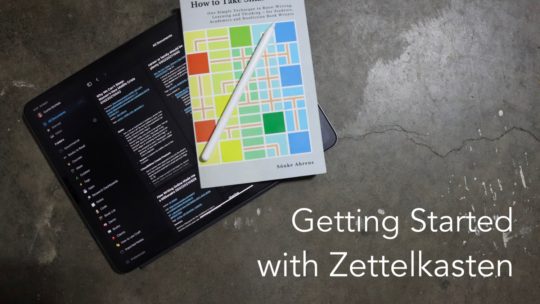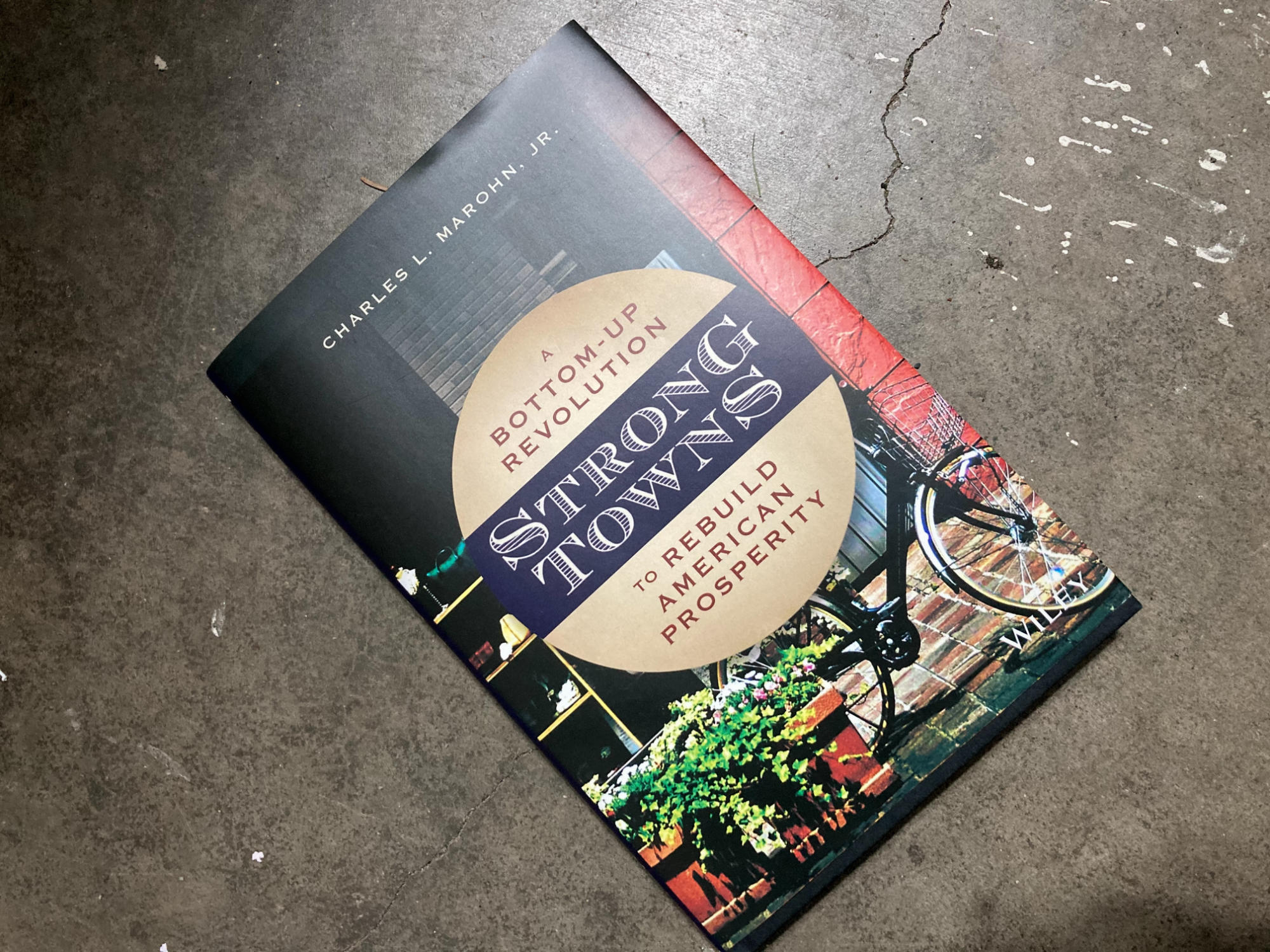For a while now I’ve been wanting to read more about what makes a strong town from an infrastructure and layout perspective. Based on the recommendation of theNot Just Bikes YouTube Channel, I’m starting my reading with Strong Town by Charles Marohn because the Strong Towns organization seems to be one of the leaders in research in this field.
The goal of Marohn is to look at North American city design to see if it is actually a decent way to build cities when compared to cities of the past.
North American City Design in Broken
Cities of the past were built after thousands of years of trial and error. In contrast to this cities in North America were designed by a few European intellectuals whose own culture rejected their ideas bout city design1. Americans specifically, and all of North America, buoyed with boundless optimism and unlimited space took these untested theories and built them into full cities without any of the testing and trial and error that was used in older cities.
What propped this up was the period after WWII where there was such abundance that as long as America kept moving in any direction they prospered2. This abundance of everything masked the terrible design of the cities that were being built. When faced with major problems like traffic congestion, it didn’t trigger the realization that the design was bad, it triggered more spending. Cities added more lanes to spend their way out of the problem with their design, only to find that the problem remained as congestion stayed even with road expansion. The problem is fundamental to the car centric design of North American cities.

Getting Started with Zettelkasten
If you’ve been wondering about what Zettelkasten is and how to start organizing your notes with this excellent system then this course is for you. I’ll walk you through how I use this system to develop my reading research for posts like this one here. You can also become a member to get all my courses.
$99 USD (30-day guarantee)
While I’ve highlighted highways, North American subdivisions are also terrible ponzi schemes3. That subdivision with large yards doesn’t actually bring in enough tax revenue to the city to pay for the roads and sewers that the houses sit on. This means that the only way to pay for the repairs that are needed around 25 years after a new subdivision is built is to continue to grow and bring in new revenue and subdivisions that don’t yet need the maintenance. Marohn cites Detroit as one of the early examples of this city design in action collapsing on itself4. Not Just Bikes has an excellent video covering how America Bankrupted Cities if you want to dig deeper into this.
It was one of the first cities built focused on cars. When growth stopped because the car industry changed, Detroit no longer had any money to pay to maintain it’s infrastructure. This has meant that neighbourhoods crumble and the city of Detroit is what we know today. Of course if you mention this to any other cities they’ll all say they’re not Detroit and they’re the exception to the rule.
When I used to teach financial management courses, I’d hear the same thing. Despite the statistics that say if you spend on a Credit Card you spend 12-18% more than if you spent cash, I never encountered a single person that said they did this. After they committed to running a test and not using their cards, every single one of them realized they were, but when first presented with the idea no one was the problem.
So What is Good City Design?
Marohn takes a look at older cities to look at how we should be building our cities now. Citing a street vendor in Pompeii he talks about a living space behind a shop5. This would free one adult to do the parenting while another adult went out to the fields to work for the day. All the houses were right up against each other as well, which meant that your neighbour could keep an eye on your shop if you had to run down the road. It also meant that all the doors faced the same way and there were no rear entrances. The result of this layout is that you can watch an entire street for safety by walking down it. That all the neighbours on the street can see if something odd is going on.
We’ve been experiencing part of this now with working from home that has been forced on businesses with the pandemic. I can watch my kids if my wife needs to go out, and if I need to do something, she is also working at home. This also highlight some problems with our work lives. Employers expect that you have no kids. That no matter how productive you are they get the benefits of it while you do more and work longer hours.
In contrast the shop owner in Pompeii was only responsible to themselves. If child rearing took time away from productivity, that was okay and under their control.
It also means that we need to stop letting kids have zero responsibility around the house. In Why We Can’t Sleep we were presented with the idea that kids aren’t responsible for major chores like they have been in the past which pushes all of the household maintenance onto parents, both of whom are working[^Why We Can’t Sleep Page 69].
To add to this stay at home mom’s now must tag along everywhere with kids as supervisors or servants6. Instead of the community that would help watch kids, we have a community that calls Child Protective Services on a kid walking a block to purchase candy. This means that parents who do want to give kids more responsibility are policed by society and must live in fear of their neighbours. Instead of neighbours being partners in child rearing from a distance, they’re police ready to enforce what they believe is the proper ways to raise children.
So How Do We Fix It
Marohn has a bunch of suggestions around how to fix the state of cities in North America, many of them entirely unpopular. He’d vote for abandoning the areas of the city that are not tax revenue positive for the infrastructure they sit on. This is predominantly the “rich” suburbs. The thing about those less desirable old downtown buildings is that they generate more tax revenue and thus are a positive on the city balance sheets.
He’d also recommend not giving any tax breaks to mega-stores because they are less valuable to the city than a corresponding block of shopping in a walkable old downtown area. Mega-stores get tax breaks, and the city builds out all the infrastructure to service them. Many times these stores move on just as the tax breaks are ending, the infrastructure needs maintenance, and no other business in town wants to take on the old building with all the maintenance that must be done. This leaves the city with a building that crumbles on roads that are bad. The solution is to tear it down and build something else.
You can watch a video explaining this from Not Just Bikes as it looks at two blocks in a city and the revenue they generate. Hint: that nice new franchise restaurant is a terrible investment while that old block of businesses is amazing and where the city should be spending all it’s money to support the buildings and businesses.
Moving forward, we should no longer let cities expand until all available space is used7. No new shopping blocks when we have vacant store fronts.
Instead of looking at the total taxes a business pays into city accounts, we need to look at the tax per acre that the business generates8. This is where you’ll see that shiny mega-store being outpaced by older buildings because those older buildings generate far more tax revenue and are far more versatile as the city needs change with it’s population.
North American cities need to loosen up zoning codes and stop building everything to a finished state9. Residents of the cit need to be free to convert a garage into a small shop without neighbours protesting. Zoning laws need to stop mono-culture development and allow for increased diversity in the buildings we have10. Increased diversity brings a stronger whole where mono-culture is ripe for a shock that will kill the whole thing.
We need to stop pushing for new stuff and instead praise maintenance of what we have. Any solution to “fix” these cities as they crumble that includes maintaining all existing infrastructure is doomed to fail11. Let some of those rich suburb areas take on their own roads and maintain them. When presented with the actual bill, many will simply move because they realize that what they have is a terrible investment.
Should You Read Strong Towns by Charles Marohn
If you have any interest in what type of development and policies is best to build a thriving city, then yes you need to read this book. It’s a good primer without being too shallow. I’m sure you’ll develop a much bigger reading list once your done, and notice a bunch of stuff in your city that is wasting resources and returning little to the city itself.
My only caution is that if you read this book you’re going to be annoyed about the design of your city. You’ll see a new mega-store going up and be annoyed that the city is throwing money away. You’ll see predominantly white affluent neighbourhoods getting investment because they have the time to bug city government and it’s going to make you angry because you know that the houses they own don’t actually contribute to the bottom line of the city. You’ll see those older downtown areas have little investment while knowing they actually support the city properly and get pissed off.
Reading this book may just get you involved in your local city politics.
Purchase Strong Towns
